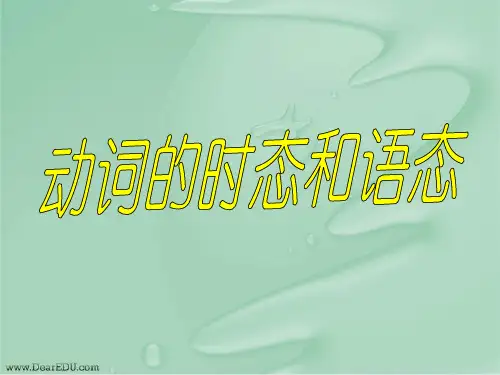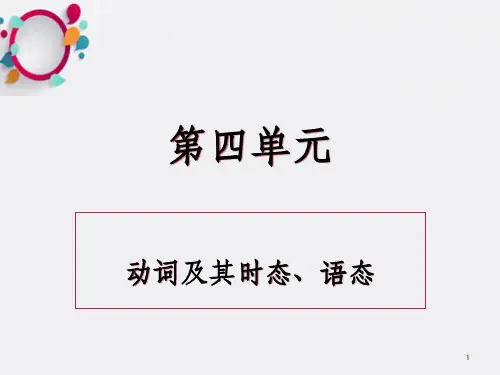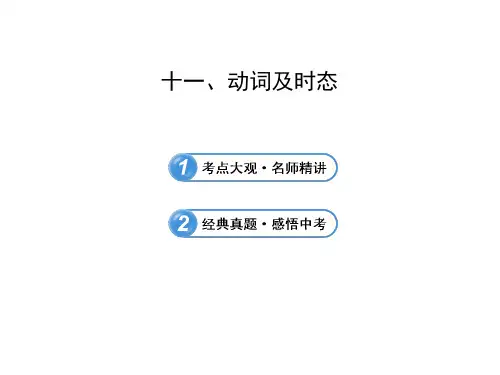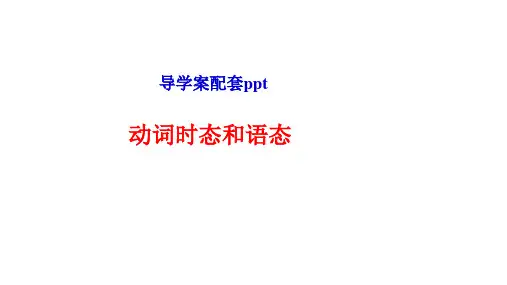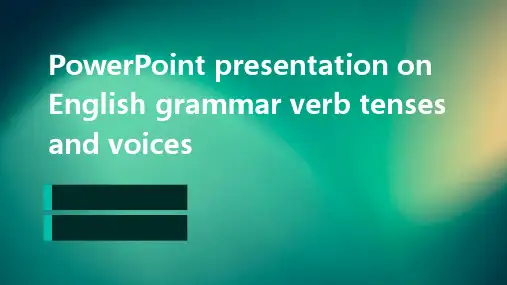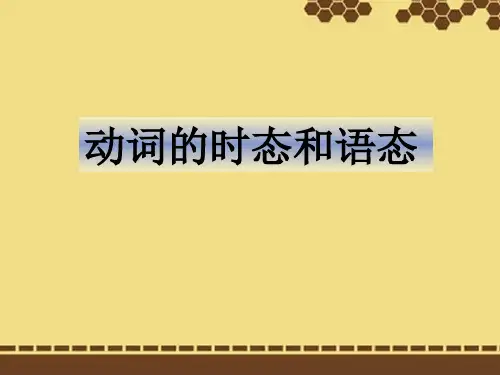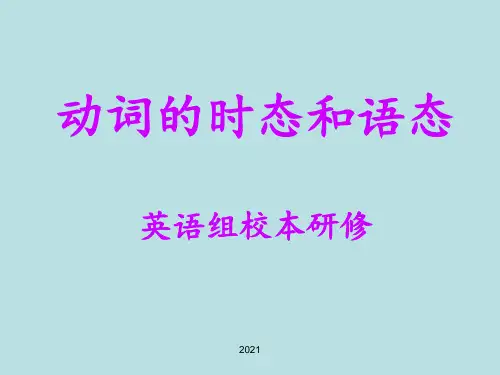动词的时态和语态 结 束
2.表示从过去某一时刻开始一直持续到现在的动作或状态, 常与“since+时间点”、“for+时间段”及how long, (ever) since, ever, before, so far, in the last/past few years, up to now, till now等时间状语连用。 She has been a dancer for ten years. 她已当了十年的舞蹈演员了。
While he was waiting for the bus, he was reading a newspaper. 他边等车边看报纸。
动词的时态和语态 结 束
4.通常不能用于过去进行时的动词有agree, be, believe, belong, care, forget, hate, have (拥有), hear, know, like, love, mean, mind, notice, own, remember, seem, suppose, understand, want, wish等。 误:I was knowing the answer. 正:I knew the answer. 我知道答案。
All the students here belong to No.1 Middle School. 这里所有的学生都是第一中学的。 4.在时间、条件状语从句中常用一般现在时代替将来时。 If you come this afternoon, we'll have a meeting. 如果你今天下午来,我们就举行会议。 5.按照时刻表运行的动作常用一般现在时态。 The plane takes off at 9:30 am. 飞机上午9:30起飞。
